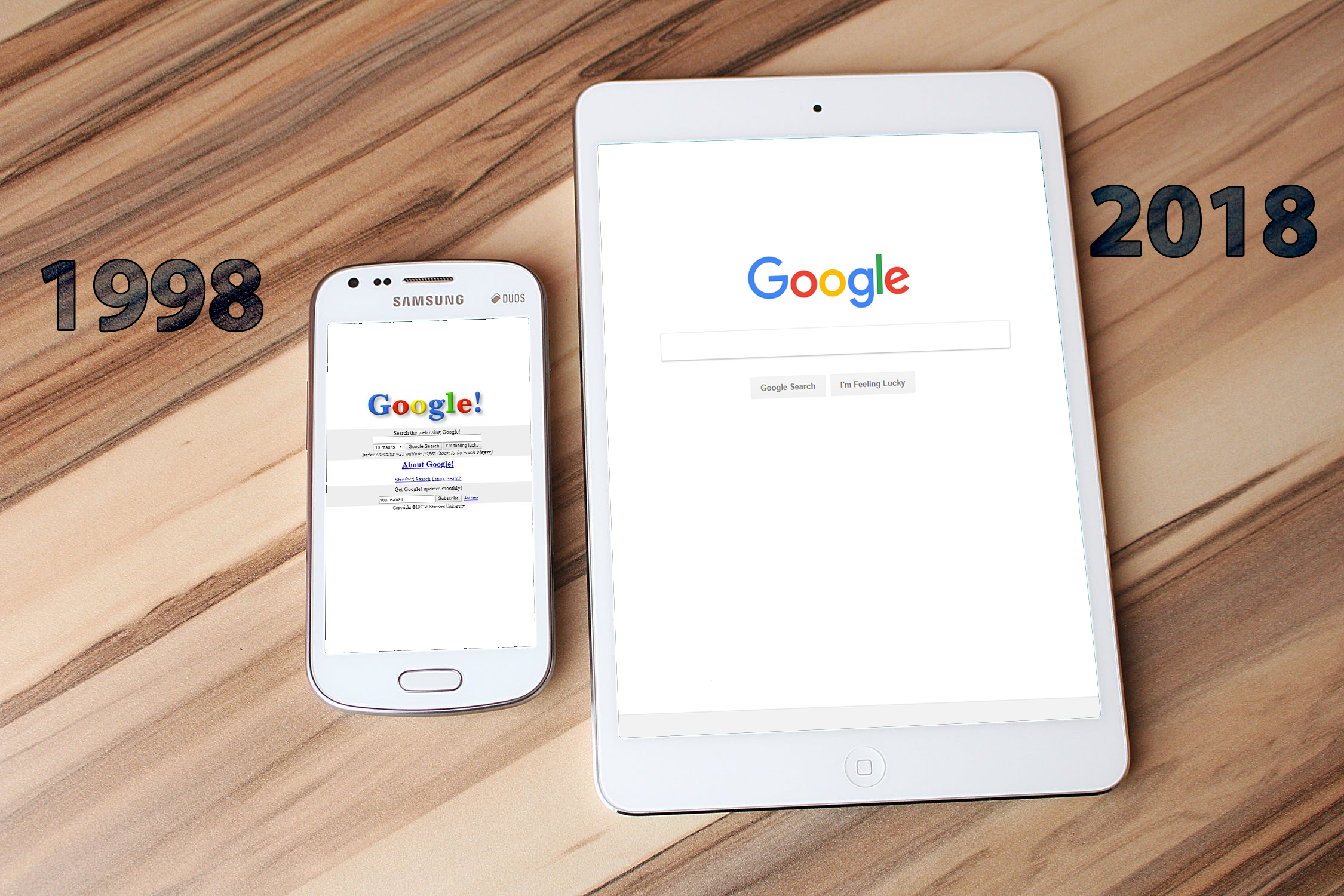It’s unsettling, at least to me, when I realize that there is now a whole generation of kids who have grown up with access to the world wide web for their entire lives. They have never experienced the world without access to Google or maybe even without free 2-day shipping (thanks Amazon Prime!). I don’t point this out to take a jab at a younger generation, but merely to emphasize the fact that many of us have watched as the internet not only bloomed but became the driving force behind nearly all of the largest developments in the world as we know it.
However, like with many of our most important developments as a species, it’s important that we don’t forget how we got here. To that end, with the help of the Wayback Machine at archive.org, here is a review of what some of today’s most popular websites looked like when the web was still young:
Tim Berners-Lee’s First Website
Okay, so yes, I’ve already deviated from the “most popular” websites, but this one has to be mentioned. Tim Berners-Lee is the founder of the world wide web, and you can still see his first website. It was created in 1991 resolution using the earliest version of HTML.
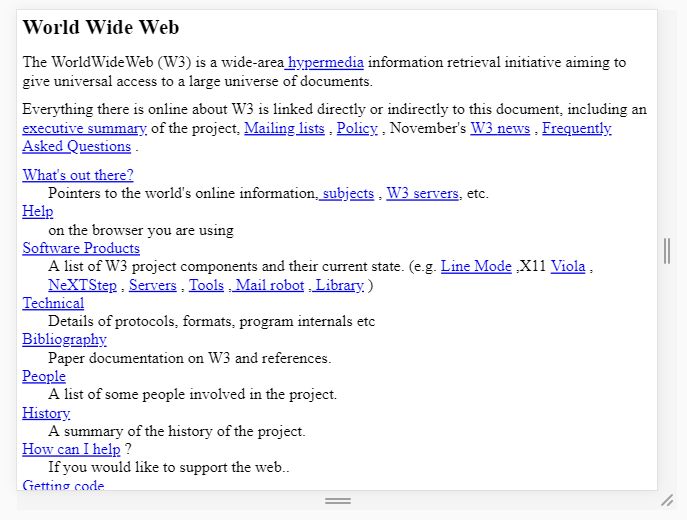
Microsoft.com
This screenshot actually comes from blogs.microsoft.com and it shows the tech giant’s web presence in November of 1995. November of ‘95 also marked the release of HTML 2.0 standard which became the base specification for all future versions to date.
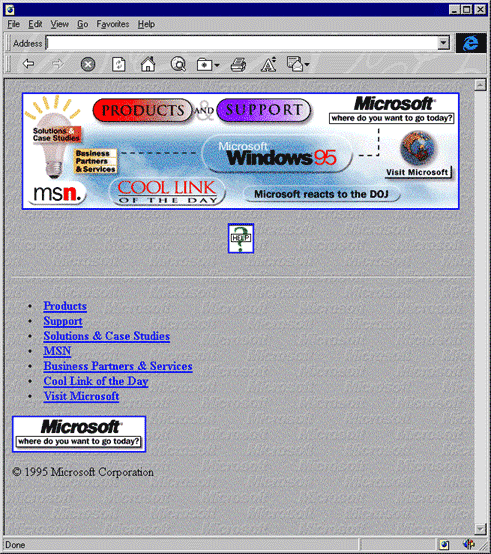
Google
The project that became the world’s #1 search engine began in 1996 as a research project by Stanford University students Larry Page and Sergey Brinn. The google.com domain was registered in 1997, and eventually, the company incorporated in 1998. This screenshot comes from November 11, 1998. See any similarities?

Amazon
Before Amazon.com became the world’s largest internet retailer, it was merely an online bookstore. It was founded by Jeff Bezos in 1994 and launched in 1995. His virtual inventory vastly outnumbered his competitors’ limited selections and within months Amazon’s sales were up to $20,000/week. Of course, eventually, Amazon’s product selection expanded. Here’s a view of what it looked like in 1999.

Craigslist
If old websites are dinosaurs, Craigslist.org is a chicken – it’s changed over time, but it’s basically the same thing. Seriously, take a look at this screenshot from 1999. The website began in 1996, but even before that, it started out as an email distribution channel that founder Craig Newmark began for his circle of software developer friends to keep each other informed about events and notices. Eventually, it needed a web interface, and the Craigslist.org we know was born.
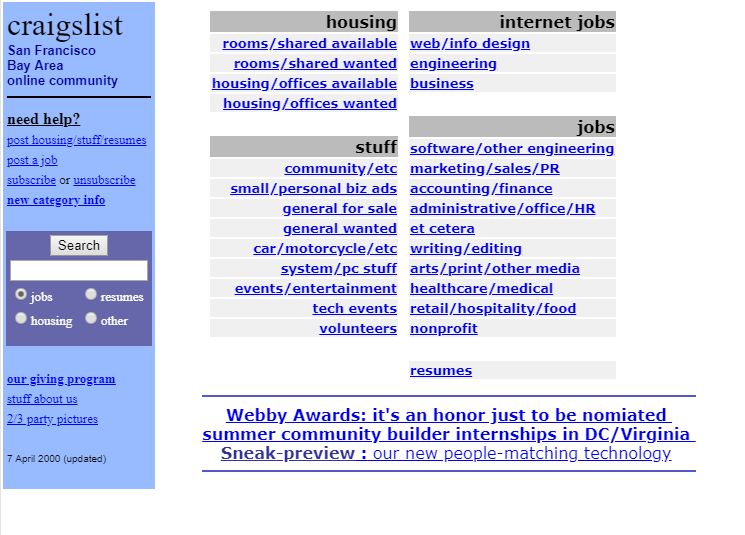
Facebook
Of course, no list of hugely popular internet websites is complete without Facebook. The company’s origins have been documented extensively, including 2010’s biographical film The Social Network. Originally in 2003, website registration was limited to students of Harvard University, but access was later granted to the public in 2006. Here’s a view of the site when it was still thefacebook.

Space Jam
Okay, once again we’re diverging from the “most popular” theme, but consider this a nostalgic bonus. The website for the popular 1996 movie Space Jam starring Michael Jordan and Bugs Bunny is still live on Warner Bros. website including all of the original content such as behind-the-scenes features and even quizzes and games. This website is a prime example of what 90’s websites were like: tiled backgrounds, frames, intro pages, corny animated gifs, the whole nine yards.
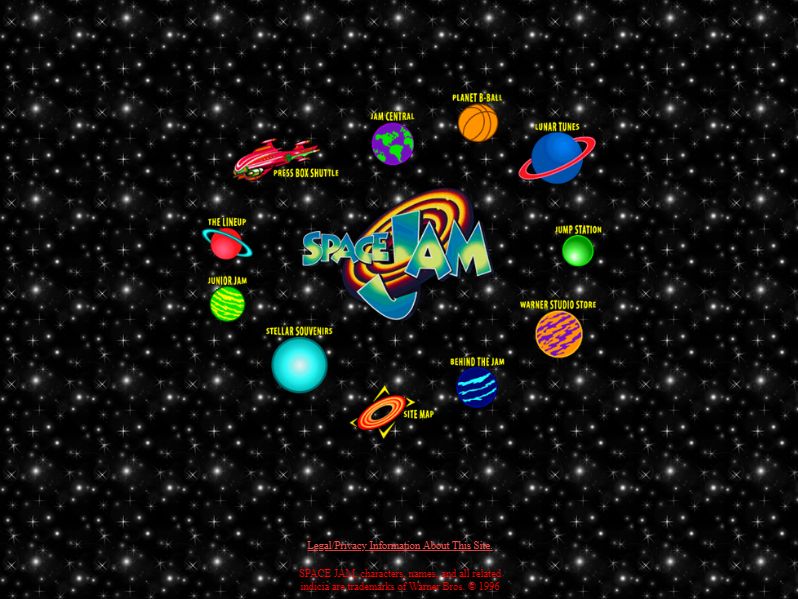
And that does it for our brief step through the early years of the internet. Try checking out some of your favorite websites on the Wayback Machine. It’s amazing to see how things have changed in just a couple of decades (just wait to see what we’re saying about today’s popular websites in 20 years).
eLink Design is a national web design, application development, SEO, and business consulting firm, founded in 2001 that specializes in custom solutions for over 800 clients around the country. With this blog, we hope to provide insights into what we are working on, areas where we think we can help shed light on problems we hear, and sometimes just cool things we have come across.
